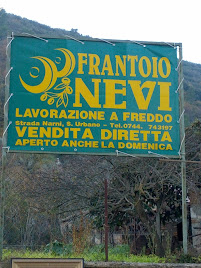Pubblicato il "Third Party Report" sull'E-Cat di Andrea Rossi
Per un mese prodotto dalle LENR un milione di volte la densità di energia della benzina
ABSTRACT New results are presented from an extended experimental investigation of anomalous heat production in a special type of
reactor tube operating at high temperatures. The reactor, named E-Cat, is charged with a small amount of hydrogen-loaded
nickel powder plus some additives, mainly Lithium.
The reaction is primarily initiated by heat from resistor coils around the
reactor tube. Measurements of the radiated power from the reactor were performed with high-resolution thermal imaging
cameras.
The measurements of electrical power input were performed with a large bandwidth three-phase power analyzer.
Data were collected during 32 days of running in March 2014. The reactor operating point was set to about 1260 ºC in the
first half of the run, and at about 1400 °C in the second half.
The measured energy balance between input and output heat
yielded a COP factor of about 3.2 and 3.6 for the 1260 ºC and 1400 ºC runs, respectively. The total net energy obtained
during the 32 days run was about 1.5 MWh. This amount of energy is far more than can be obtained from any known
chemical sources in the small reactor volume.
A sample of the fuel was carefully examined with respect to its isotopic composition before the run and after the run, using
several standard methods: XPS, EDS, SIMS, ICP-MS and ICP-AES. The isotope composition in Lithium and Nickel was
found to agree with the natural composition before the run, while after the run it was found to have changed substantially.
Nuclear reactions are therefore indicated to be present in the run process, which however is hard to reconcile with the fact
that no radioactivity was detected outside the reactor during the run.
Per oltre un mese ottenuta dalle #LENR (Low Energy Nuclear Reactions o note ai più come #FusioneFredda) un milione di volte la densità di energia della benzina.
53 pagine con dati grafici e foto http://goo.gl/vODrpJ firmate da:Giuseppe Levi..........Università di Bologna
Evelyn Foschi............Bologna
Bo Höistad................Uppsala University
Roland Pettersson...Uppsala University
Lars Tegnér..............Uppsala University
Hanno Essén............Royal Institute of Technology di Stoccolma
In lingua italiana, dal sito 22Passi i link http://goo.gl/DnHFFD
Video e racconti dai protagonisti http://goo.gl/Qj3Wuk
Sotto la foto il commento da Magnus Olofsson Ceo di ELFORSK http://goo.gl/UY0yhF
Ieri, sono stati diffusi i sorprendenti risultati delle misure a cui è stato sottoposto un cosiddetto "catalizzatore di energia" nell'arco temporale di un mese. Il report, scritto da ricercatori del KTH e delle Università di Uppsala e di Bologna, descrive un rilascio di calore che non può essere spiegato da sole reazioni chimiche. I cambiamenti isotopici del carburante analizzato indicano che potrebbero piuttosto essersi verificate reazioni nucleari a bassa temperatura. Ciò implica che potremmo essere di fronte a un nuovo modo di estrarre energia nucleare possibilmente senza radiazioni ionizzanti e scorie radioattive. La scoperta potrebbe potenzialmente diventare molto importante per l'approvvigionamento energetico mondiale.
La parte centrale del reattore è uno stretto cilindro lungo venti centimetri. Negli esperimenti il reattore ha funzionato a temperature fino a circa 1400 gradi Celsius. È stato osservato un rilascio di energia netto pari a 1500 kWh. La produzione di energia termica è stata quantificati pari a 3-4 volte l'energia elettrica immessa. Il reattore è stato riempito con 1 grammo di nichel in polvere caricato di idrogeno più alcuni additivi.
Negli ultimi anni, Elforsk ha seguito lo sviluppo delle ormai cosiddette LENR, cioè reazioni nucleari a bassa energia. Elforsk ha pubblicato una breve rassegna sulle LENR. Elforsk ha cofinanziato il lavoro descritto nel report, oltre a precedenti misure che hanno mostrato un eccesso anomalo di energia.
Se sarà possibile gestire e controllare in modo sicuro queste reazioni, a questo punto ritenute di origine nucleare, potremo assistere a una trasformazione fondamentale del nostro sistema energetico. Elettricità e calore potrebbero allora essere prodotti con componenti relativamente semplici, favorendo un decentramento dell'approvvigionamento energetico che potrebbe essere sia poco costoso sia parte di una risposta al cambiamento climatico globale.
Per comprendere e spiegare il fenomeno bisogna continuare la ricerca. Metteremo al lavoro i ricercatori nel tentativo di confermarlo e poi spiegare come funziona.Yesterday, astounding results from month-long measurements on a so-called “energy catalyser” were reported. The report, written by researchers from Uppsala University, KTH and the University of Bologna, describes a release of heat that cannot be explained by chemical reactions alone. Isotope changes in the analysed fuel instead indicate that nuclear reactions might have occurred at low temperatures. It implies that we may be facing a new way to extract nuclear energy possibly without ionizing radiation and radioactive waste. The discovery could potentially become very important for the world's energy supply.
The central part of the reactor is a narrow cylinder that is two decimetre long. In the experiments, the reactor operated at temperatures up to about 1 400 degrees Celsius. A net energy release of 1 500 kWh was observed. The thermal energy output was three to four times the electrical energy input. The reactor was filled with 1 gram hydrogen-loaded nickel powder and some additives.
In recent years, Elforsk has followed the development of what has come to be called LENR – Low Energy Nuclear Reactions. Elforsk has published an overview summary of LENR. Elforsk has co-funded the work described in the report in addition to earlier measurements that showed an anomalous excess of energy.
If it is possible to safely operate and control these reactions that are now believed to be nuclear reactions, we may see a fundamental transformation of our energy system. Electricity and heat could then be produced with relatively simple components, facilitating a decentralization of energy supply that could be both inexpensive and part of a solution for global climate change.
More research is needed to understand and explain. Let us engage researchers in trying to validate and then explaining how it works.
Magnus Olofsson, CEO Elforsk – Swedish Electrical Utilities' R & D Company




Commenti
Posta un commento